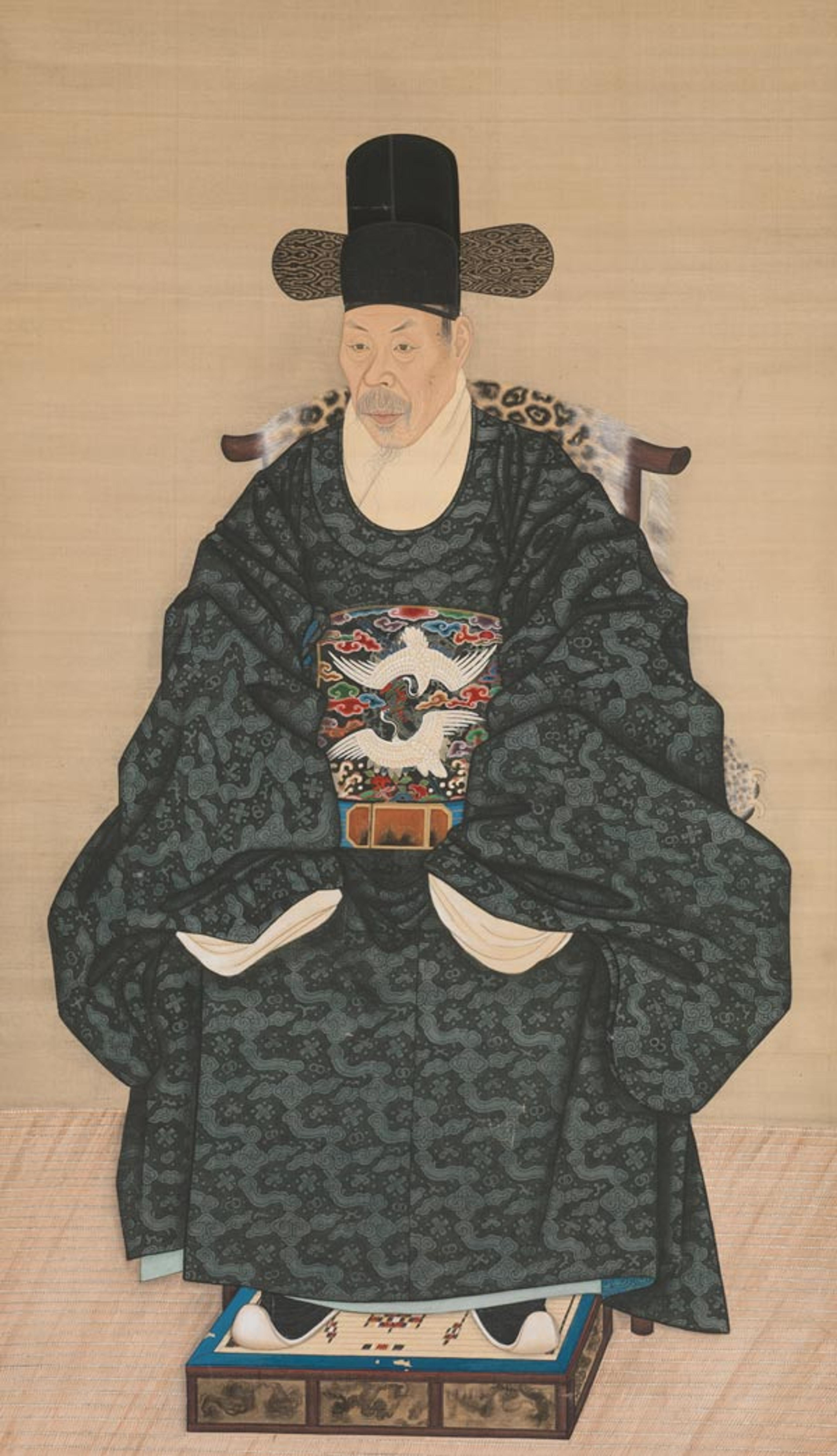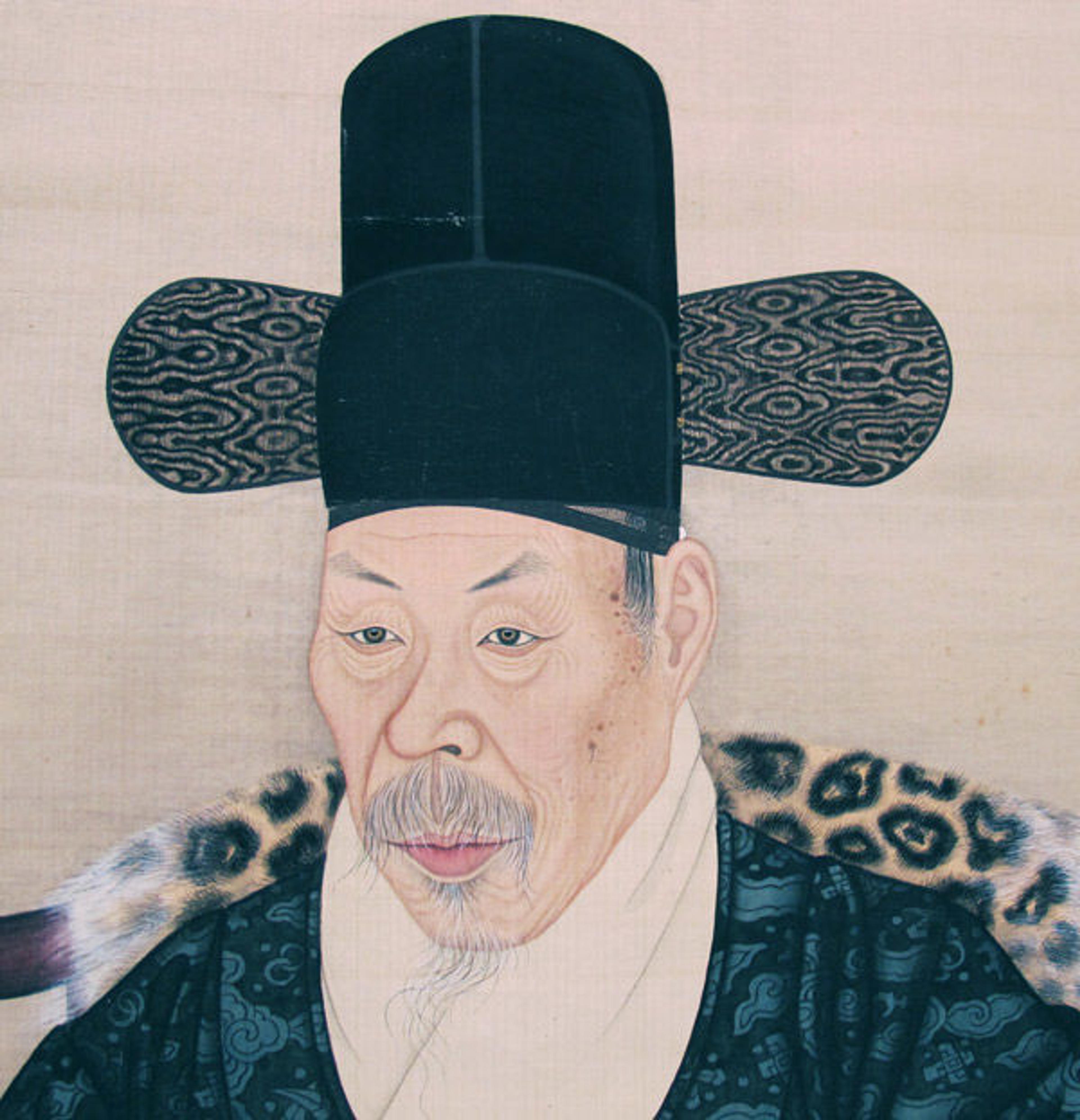«Portraits can reveal so much about the character of the person depicted, beyond the obvious physical traits. What can you tell about the gentleman in this painting?»

Unidentified Artist Korean, late 18th–early 19th century. Portrait of Yun Dongseom (1710–1795), ca. 1790–1805. Joseon dynasty (1392–1910). Korea. Hanging scroll; ink and color on silk. The Metropolitan Museum of Art, New York, Purchase, Harris Brisbane Dick and 2014 Benefit Funds; Friends of Korean Art, Locks Foundation, Hyun Jun M. Kim, and Tchah Sup and Myong Hi Kim Gifts, 2014 (2014.605)
What we initially see is a distinguished elderly man wearing a distinctive hat and an elegant, full-length robe adorned with a colorful rank badge featuring two cranes. As we look closer, we notice the fine lines and dark spots of age plainly shown on his face—there is no Photoshop enhancement here. His is not a soft, gentle countenance; rather, this man's facial features and expression suggest an astute, possibly cantankerous personality. His name was Yun Dongseom, a civil official, scholar, and celebrated calligrapher of the Joseon government in eighteenth-century Korea.

Detail view of Portrait of Yun Dongseom (1710–1795)
Paintings like this work functioned as ancestral portraits in traditional Korea, and were used in Confucian rites that honored a family's male lineages. (It's rare to find portraits of women during this period.) As such, a portrait had to represent both the sitter's physical attributes as well as his spirit.
This painting, recently acquired by the Museum, is currently making its debut in the Arts of Korea gallery in the exhibition Korea: 100 Years of Collecting at the Met, on view through March 27, 2016.

Left: Gallery 233, Arts of Korea
Featuring more than seventy masterpieces, this show highlights the stories behind the objects, individuals, and trends that helped shape the Met's collection of Korean art. It also reveals how the West's imagination and appreciation of Korean culture have evolved over the past century.
When Americans first began collecting Korean art in the late nineteenth and early twentieth centuries, the so-called "Hermit Kingdom" was largely an unknown culture. In those days, while some of the Met's finest pieces, such as the Goryeo celadon, were prized for their distinctively Korean aesthetic, other masterpieces, such as the rare and exquisite fourteenth-century Buddhist paintings, were initially misidentified as Japanese and later properly reattributed in accordance with new scholarship. Today, the Museum's collection of Korean art is significantly transformed from a century ago—and continues to grow.
This exhibition is part of The Met Asian Art Centennial 2015, a yearlong celebration of the Museum's Department of Asian Art. View all blog posts related to the centennial.